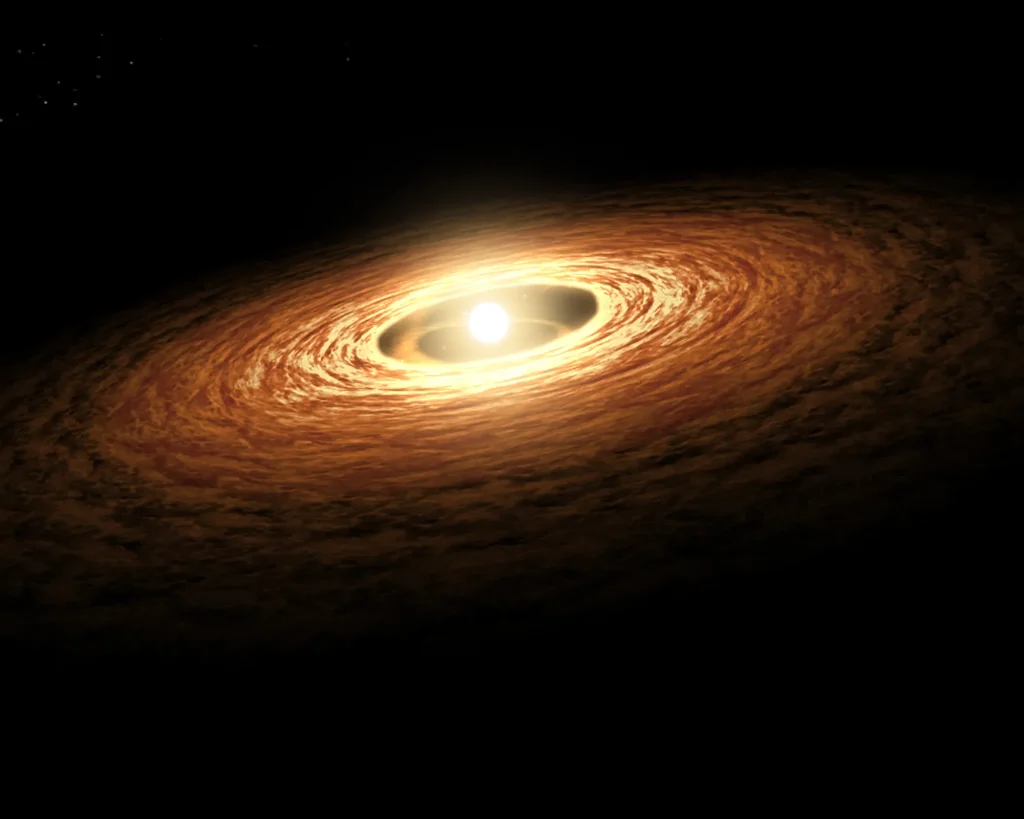The powerful James Webb Space Telescope (JWST) has found evidence about a potent asteroid collision Beta Pictoris an infant star system at a distance of 63 light years away from Earth.
It was way more powerful than the asteroid that is believed to be responsible for the extinction of dinosaurs, according to a Live Science report.
Beta Pictoris star system is near our solar system having a history of only 20 million years. It has two gas giants with no rocky body because maybe they could be in the process of formation, according to the study presented at the American Astronomical Society in Wisconsin.
The collision of two asteroids also generated thousands of times more debris of dust.
The star system is very crucial for scientists to understand the evolution of stars and its associated system’s formation.
In a statement, Christine Chen, an astronomer at Johns Hopkins University and lead author, said: “Beta Pictoris is at an age when planet formation in the terrestrial planet zone is still ongoing through giant asteroid collisions, so what we could be seeing here is basically how rocky planets and other bodies are forming in real-time.”
The dust first spotted by the Spitzer Space Telescope between 2004 and 2005 was completed after the James Webb Telescope was observed again.
It means the collision took place around 20 years ago forming particles of dust smaller than pollen or powdered sugar, according to Chen.
The results would allow experts to better understand the development of the star systems and habitability on its planets.

